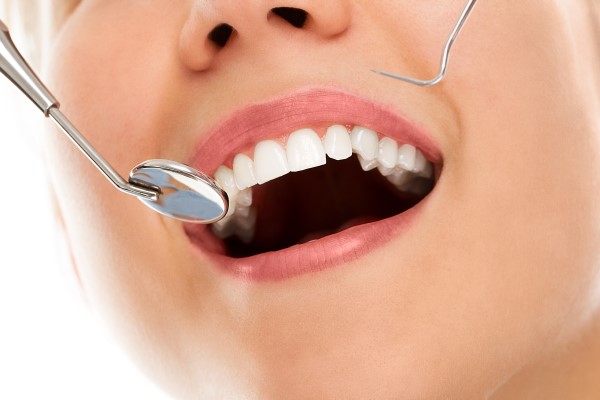What to Do When Tooth Decay Strikes: Effective Strategies for Treatment and Prevention

To treat tooth decay, you can apply a fluoride gel or varnish, use fluoride mouth rinse, or have your dentist fill the tooth with a temporary filling. In more severe cases, a crown may be required or the tooth may need to be removed and replaced.
It is important to see a dentist for care if you have signs of a cavity. Preventing tooth decay can be done by maintaining a healthy diet, avoiding sugary drinks, drinking plenty of water, and brushing your teeth twice a day.
Enamel can repair itself using minerals from saliva and fluoride, but if decay continues, a dentist will need to repair the cavity with a filling.
Understanding Tooth Decay And Its Progression
To address tooth decay, it is crucial to see a dentist who will assess the severity and recommend appropriate treatment. Options range from fillings for early-stage decay to crowns for more advanced cases. Preventive measures like a healthy diet, regular brushing, and fluoride treatments can also help in reversing and avoiding tooth decay.
| Treatment options include: |
|
– Applying a fluoride gel or varnish to tooth surfaces – Prescribing fluoride tablets – Recommending the use of a fluoride mouth rinse |
| If identified early, dentin decay may be treated with a filling. In more advanced cases, placement of a crown may be required. A crown is a… |
| Treatment for tooth decay depends on how severe it is. A dentist can prescribe fluoride treatments like mouthwash or varnish to reverse early tooth decay. You… |
| The following home remedies might help prevent cavities or treat “pre-cavities” by remineralizing weakened areas of your enamel before a… |
| You can prevent tooth decay by eating a healthy diet, avoiding sugar sweetened drinks, drinking plenty of tap water, brushing your teeth twice a day using a… |
| Enamel can repair itself by using minerals from saliva, and fluoride from toothpaste or other sources. But if the tooth decay process continues, more minerals are lost. Over time, the enamel is weakened and destroyed, forming a cavity. A cavity is permanent damage that a dentist has to repair with a filling. |
| During an extraction treatment, the dentist usually numbs the area with lidocaine. Some patients may also need nitrous oxide gas to help them stay calm and reduce pain. Dentists use tools called elevators and forceps to enlarge the socket, loosen, and remove the tooth. |
Treatment Options For Tooth Decay
When it comes to treating tooth decay, there are several dental procedures that can be used:
- Filling Cavities and Restoring Damaged Teeth: If tooth decay is identified early, it can be treated with a filling. Your dentist will remove the decayed pulp, clean the tooth, and fill it with a temporary filling until a permanent restoration can be placed.
- Crowns and Their Use in Advanced Cases: In more advanced cases of tooth decay, the placement of a crown may be necessary. A crown is a cap that covers the entire tooth and restores its shape and function.
- When Tooth Removal is Necessary: If the tooth is severely damaged and cannot be restored, it may need to be removed. Your dentist may be able to replace the tooth with a prosthetic.
If you have signs of tooth decay, it is important to seek care from a dentist who will recommend the best course of action for your situation. Remember, early treatment can help prevent further damage and potential tooth loss.
Preventing Tooth Decay: Best Practices
Preventing tooth decay is crucial to maintaining good oral hygiene habits. Here are some tips to help reduce sugar consumption and promote dental health:
- Limit intake of sugary foods and drinks.
- Brush your teeth at least twice a day with fluoride toothpaste.
- Floss daily to remove plaque and food particles.
- Visit your dentist regularly for check-ups and cleanings.
- Consider using a fluoride mouth rinse or applying fluoride gel or varnish to tooth surfaces.
- Eat a balanced diet with plenty of fruits and vegetables.
- Avoid frequent snacking and sipping on sugary drinks throughout the day.
- Be aware of the role of fluoride in preventing tooth decay.
- Replace your toothbrush every three to four months or sooner if bristles are frayed.
- If you have signs of tooth decay, don’t hesitate to see a dentist for proper care and treatment.
By following these practices, you can help prevent tooth decay and maintain good dental health.

Credit: www.escondidofamilydentistry.com
Frequently Asked Questions For What To Do When Tooth Decay
Can You Fix Tooth Decay?
To fix tooth decay, visit a dentist who will remove the decayed area and fill the tooth with a temporary filling. In more severe cases, a crown may be required. If the tooth is too damaged, it may need to be removed.
Prevent tooth decay by eating a healthy diet, avoiding sugary drinks, and practicing good oral hygiene.
How Can I Treat Rotten Teeth At Home?
To treat rotten teeth at home, you can apply fluoride gel or varnish to tooth surfaces, use fluoride mouth rinse, and take fluoride tablets. If the decay is severe, see a dentist who may recommend a filling or crown. In some cases, the tooth may need to be removed.
Prevent tooth decay by maintaining a healthy diet, brushing twice a day, and avoiding sugary drinks.
How Do You Get A Decaying Tooth Out?
To remove a decaying tooth, it is best to visit a dentist for professional treatment. The dentist will remove the decayed area, clean the tooth, and may fill it temporarily or place a crown if necessary. In severe cases, the tooth may need to be extracted.
It’s important to seek timely care to prevent further damage.
How Long Does Tooth Decay Take To Heal?
Tooth decay doesn’t heal on its own. Treatment options include filling for early decay and crown placement for advanced cases. Severe damage may require tooth removal and replacement. Fluoride treatments can reverse early decay. It’s important to see a dentist for proper care and prevention.
Conclusion
Tooth decay is a common dental problem that can have serious consequences if left untreated. Fortunately, there are several treatment options available. Your dentist may recommend applying fluoride gel or varnish to the affected tooth surfaces, prescribe fluoride tablets, or suggest using a fluoride mouth rinse.
In more advanced cases, the decayed pulp may need to be removed and the tooth filled or crowned. It’s important to address tooth decay as soon as possible to prevent further damage and potential tooth loss. Schedule an appointment with your dentist if you suspect tooth decay and follow their recommended course of action for the best outcomes.
Remember, prevention is key, so maintain good oral hygiene practices and follow a healthy diet to minimize the risk of tooth decay.





